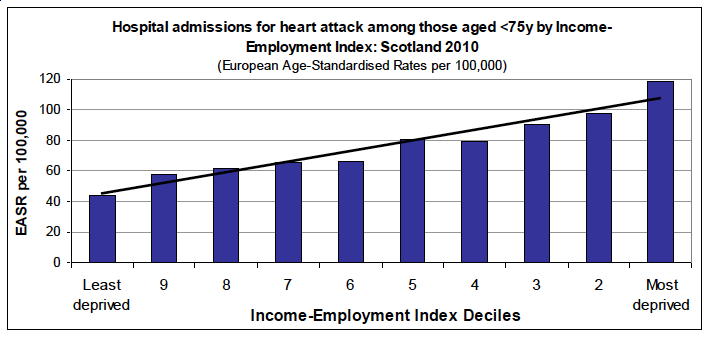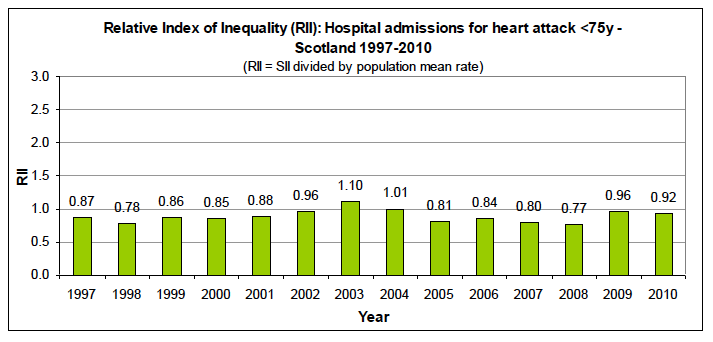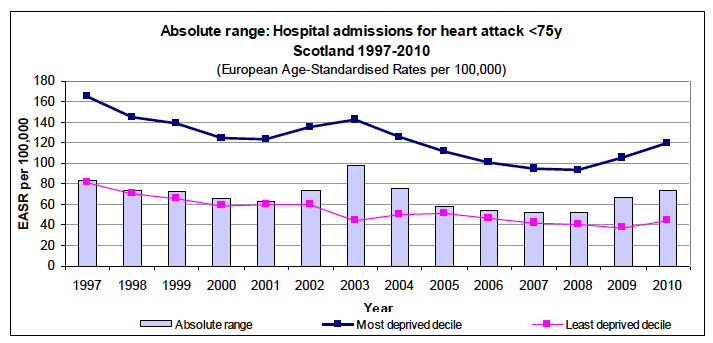Long-Term Monitoring of Health Inequalities: Headline Indicators - October 2012
An Official Statistics publication for Scotland. An annual report of headline indicators of health inequalities, including data for most indicators to 2010.
This document is part of a collection
Coronary Heart Disease - first ever hospital admission for heart attack aged under 75 years
Summary
- Over time inequalities have fluctuated in both absolute and relative terms, but with no clear long-term trend
Nearly 4,400 new cases of heart attack (aged under 75 years) were admitted to hospital in 2010. Since 1997 the rate of admissions has fallen by 32%; however the recent trend has been increasing again after admissions reached their lowest level in 2007. The admissions rate is more than two and half times higher in the most deprived areas than in the least deprived areas (118.6 compared to 44.3 cases per 100,000 population, in 2010). The recent increase in admissions rates in the most deprived areas has resulted in an increase in inequalities in both relative and absolute terms since 2008, after both measures fell between 2003 and 2008. Over the longer-term there is little evidence of any clear downward trend in inequalities.
Inequalities gradient in the most recent year available

Relative Index of Inequality (RII) over time

Absolute range over time

Scale / context
| Number of new cases | Target population size | Rate per 100,000 (EASR) | |
|---|---|---|---|
| 1997 | 5,765 | 4,740,269 | 110.9 |
| 1998 | 5,676 | 4,729,975 | 108.3 |
| 1999 | 5,102 | 4,721,298 | 97.0 |
| 2000 | 4,812 | 4,708,667 | 90.7 |
| 2001 | 4,776 | 4,703,661 | 89.6 |
| 2002 | 4,833 | 4,690,508 | 89.6 |
| 2003 | 4,569 | 4,690,603 | 84.0 |
| 2004 | 4,413 | 4,706,922 | 80.5 |
| 2005 | 4,054 | 4,718,403 | 73.2 |
| 2006 | 3,817 | 4,734,676 | 68.6 |
| 2007 | 3,624 | 4,755,963 | 64.5 |
| 2008 | 3,733 | 4,775,321 | 65.8 |
| 2009 | 3,857 | 4,795,479 | 67.1 |
| 2010 | 4,368 | 4,816,465 | 75.3 |
Contact
Email: John Dowens
There is a problem
Thanks for your feedback